Abstract
Zusammenfassung. Über die vergangenen Jahre hat eine wahre Flut an technologischen Innovationen die Behandlungsmöglichkeiten für Menschen mit Diabetes mellitus drastisch erweitert. Die kapilläre Blutzuckermessung wird nach und nach durch die kontinuierliche Glukosemessung ersetzt. Immer mehr Insulinpumpen-Systeme werden an kontinuierliche Glukosemessung gekoppelt und dadurch zunehmend selbstregulierend. Neue ultra-lang und -kurz wirksame Insuline sind erhältlich. Für mehrere anti-diabetische Wirkstoffgruppen, die bisher injiziert werden mussten, gibt es bald orale Alternativen.
Abstract. In the last few years a whole array of technical innovations has dramatically increased treatment options for patients with diabetes mellitus. Capillary blood glucose measurements are increasingly replaced by continuous glucose monitoring. More and more insulin pump systems are linked up to continuous glucose monitoring, which thereby become ever more self-regulating. Novel ultra-long and ultra-short acting insulins have become available. There will soon be oral alternatives for several anti-diabetic treatments, which hitherto needed to be injected.
Résumé. Au cours des dernières années, un véritable flot d’innovations technologiques a considérablement élargi les options de traitement pour les personnes atteintes de diabète sucré. La mesure de la glycémie capillaire est progressivement remplacée par une mesure continue de la glycémie. De plus en plus de systèmes de pompe à insuline sont couplés à la mesure continue du glucose et donc de plus en plus autorégulateurs. De nouvelles insulines de durée d’action ultra-longues et à -courte sont disponibles. Des solutions de rechange actives par voie orale seront bientôt disponibles pour plusieurs groupes de médicaments antidiabétiques qui devaient auparavant être injectés.
Bibliografie
Bundesamt für Statistik : Diabetes. 2014. https://www.bfs.admin.ch/bfs/de/home/statistiken/gesundheit/gesundheits zustand/krankheiten/diabetes.html; letzter Zugriff 12.07.2018.: Continuous Glucose Monitoring Working Group of the Working Group Diabetes Technology of the German Diabetes Association: Continuous glucose monitoring: evidence and consensus statement for clinical use. J Diabetes Sci Technol 2013; 7: 500–519.
, : DIAMOND Study Group: Continuous glucose monitoring versus usual care in patients with type 2 diabetes receiving multiple daily insulin injections: a randomized trial. Ann Intern Med 2017; 167: 365–374.
Abbot : Freestyle libre. 2018 : https://www.freestylelibre.ch/de_CH; letzter Zugriff 12.07.2018.: Novelglucose-sensing technology and hypoglycaemia in type 1 diabetes: a multicentre, non-masked, randomised controlled trial. Lancet 2016; 388: 2254–2263.
Dexcom, Inc : Dexcom. 2018. : https://www.dexcom.com/g6-cgm-system, letzter Zugriff 12.07.2018.Roche Diabetes Care : Das Eversense XL CGM System. 2018. https://www.eversense.de; letzter Zugriff 12.07.2018., : A prospective multicenter evaluation of the accuracy of a novel implanted continuous glucose sensor: PRECISE II. Diabetes Technol Ther 2018; 20: 197–206.
: Glucose Monitoring in individuals with diabetes using a long-term implanted sensor/telemetry system and model. IEEE Trans Biomed Eng 2017; 64: 1982–1993.
Verily Life Sciences LLC : Miniaturized CGM. 2018. https://verily.com/projects/sensors/miniaturized-gcm; letzter Zugriff 12.07.2018., : ASPIRE In-Home Study Group. Threshold-base insulin-pump interruption for reduction of hypoglycemia. N Engl J Med 2013; 369: 224–232.
, : Safety of a hybrid closed-loop insulin delivery Ssystem in patients with type 1 diabetes. JAMA 2016; 316: 1407–1408.
Medtronic MiniMed, Inc : MiniMed™ 670G Insulin Pump System. 2018. https://www.medtronicdiabetes.com/products/minimed-670 g-insulin-pump-system; letzter Zugriff: 12.07.2018., : Home use of a bihormonal bionic pancreas versus insulin pump therapy in adults with type 1 diabetes: a multicentre randomised crossover trial. Lancet 2017; 389: 369–380.
, : New insulin glargine 300 units/ml versus glargine 100 units/ml in people with type 1 diabetes: a randomized, phase 3a, open-label clinical trial (edition 4). Diabetes Care 2015; 38: 2217–2225.
: New insulin glargine 300 units/mL versus glargine 100 units/ml in people with type 2 diabetes using basal and mealtime insulin: glucose control and hypoglycemia in a 6-month randomized controlled trial (edition 1). Diabetes Care 2014; 37: 2755–2762.
, : Effect of insulin degludec vs insulin glargine U100 on hypoglycemia in patients with type 1 diabetes: The SWITCH 1 randomized clinical trial. JAMA 2017; 318: 33–44.
, : Effect of insulin degludec vs insulin glargine U100 on hypoglycemia in patients with type 2 diabetes: The SWITCH 2 Randomized Clinical Trial. JAMA 2017; 318: 45–56.
Novo Nordisk : Fiasp 100. 2017. https://ec.europa.eu/health/documents/community-register/2017/20170109136674/anx_136674_de.pdf; letzter Zugriff: 12.07.2018., : 380-OR/380 - Efficacy and Safety of Oral Basal Insulin: Eight-Week Feasibility Study in People with Type 2 Diabetes (T2DM). Am Diabetes Assoc 2017. http://www.abstractsonline.com/pp8/#!/4297/presentation/12749; letzter Zugriff: 12.07.2018.
, : Faster use and fewer failures with needle-free nasal glucagon versus injectable glucagon in severe hypoglycemia rescue: a simulation study. Diabetes Technol Ther 2017; 19: 423–432.



